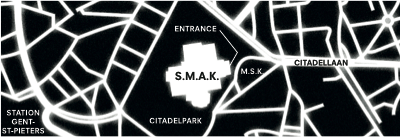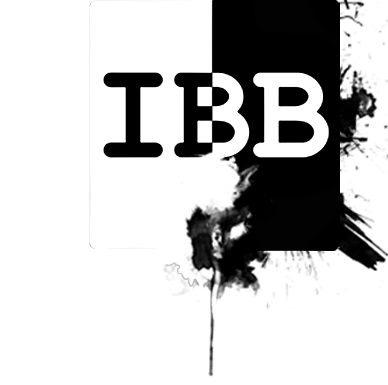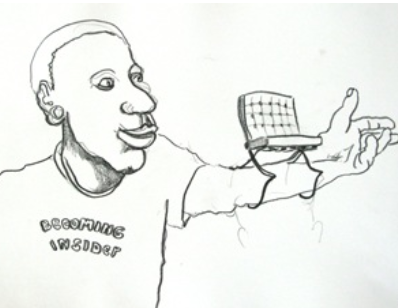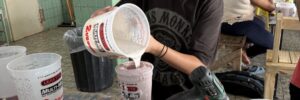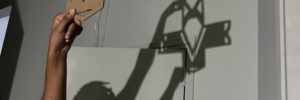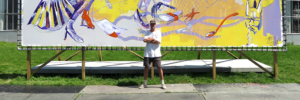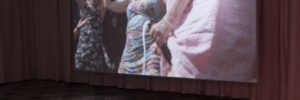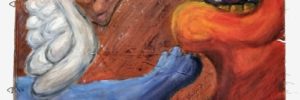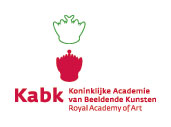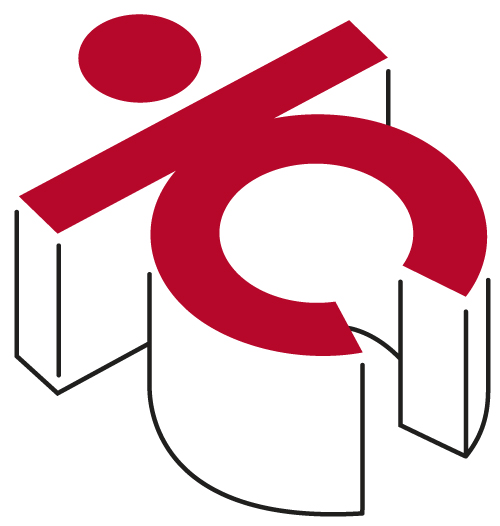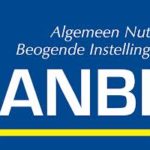25 Jun 2014 | 7,500 views
David Bade & Instituto Buena Bista (IBB)
Swan, hold fast
21.06… 21.09.2014
“My mind’s busy and my eyes see a lot”
Swan, hold fast, the title of the project by David Bade, derives from Schwan kleb an [The Magic Swan], a fairytale from Ludwig Bechstein’s Deutsche Märchenbuch. The tale tells the story of a boy who was often taunted by his brothers. An old woman advised him to go out into the wide world. She told him that at a certain place he would find a swan and that he should take it with him. When anyone touched the swan, the boy had to say ‘swan, hold fast’ and the person would remain stuck to the swan. No sooner said than done. The boy was soon walking around with the swan and a whole procession of people who were stuck to it; a very comical scene. The boy then arrived in a town where a princess lived who was always sad. Her father, the king, had made it known that anyone who could make her laugh would receive a reward. When the princess saw the boy, the swan and the line of people, she burst out laughing. So the boy received the reward (a fine estate) and was able to marry the princess. They lived happily ever after
David Bade could easily be the boy who made the princess laugh; but he would not have needed the taunting brothers and the trick given by a dear old woman. With lots of swagger and enthusiasm he would have convinced everyone he met of the crazy idea of all sticking to a swan and parading past the palace in a colourful procession, all in the interest of community and creativity. The fine estate would later be divided up among the community; and since Bade is a rebel in heart and soul he would probably have left the princess in her palace and moved on to the next town to think up a new project.
But let’s leave the fairytale there. In reality, David Bade (1970, Curaçao) is a passionate artist with an international career, an inspiring teacher in charge of an art school he co-founded himself (Instituto Buena Vista in Curaçao), a socially-engaged director of artistic community projects and a critical TV presenter of an arts programme for the general public (ArtMen). Without the slightest hint of sentimentality, he believes that art is of value to man and society because it appeals directly to their deepest selves and fulfils a representational purpose that enriches and deepens our lives. David Bade stands in the middle of this life and has a lot to say about it, a huge amount in fact. He does this in his own intrepid way, using images, words and action. But there is one thing that is at the heart of all the projects he undertakes: interaction.
In 1993, immediately after completing his studies at De Ateliers, David Bade won the prestigious Prix de Rome with his brilliantly drawn narrative scenes full of caricatural exaggeration, and absurd sculptures that he recycled from such ‘worthless’ materials as PUR foam, chicken wire, found objects and such (building) materials as clay, wood, paint, plastic, metal, rubber, etc. He later assembles the drawings and sculptures to make tremendously expressive, room-filling installations which he scatters with short pieces of writing: personal anecdotes, caustic comments on current affairs, a humorous play on words, an ironic proverb and suchlike. Bade tinkers, models, draws, colours and paints like there was no tomorrow: with a huge creative urge and great pleasure in his work. In terms of form, he cites freely from banal contemporary culture, art history and the visual idiom of Curaçao, his native country, where influences from Western and African culture meet the tradition of the colourful Caribbean carnival and folk religion. Together with his contemporaries, the nineties generation that includes Erik van Lieshout, Honoré d’O, Jason Rhoades etc., he breaks down the walls between the disciplines of sculpture, assemblage and ‘colourful’ painting in an outspoken and rebellious way so as to create a new contemporary visual idiom.
David Bade adds another stage to this process; that of sincere social commitment. He is a real artist and a teacher, or he is a real teacher and an artist; both are an integral part of who he is and what he does. Social cooperation is not a supplement to his artistic practice, but above all a way of triggering his own imagination and creativity and that of all the participants involved. Creating art with David Bade is by definition always fun for everyone.
Instituto Buena Bista
The artists David Bade and Tirzo Martha, together with art historian Nancy Hoffmann, founded the Instituto Buena Bista (IBB) on Curaçao in 2006. Curaçao, the birthplace of Bade and Martha, is an island of 150,000 inhabitants in the southern Caribbean Sea which enjoys a special status as a constituent country of the Kingdom of the Netherlands.
The founders of IBB want to provide a platform for contemporary art that simultaneously stimulates awareness and enrichment of the indigenous cultural heritage while introducing to the island new cultural developments from around the world.
The Institute’s core activities consist of organising a visual arts orientation course for talented Curaçaoan youngsters between the ages of 15 and 25, and assigning them to a professional overseas follow-up course in the fine or applied arts. To make this possible, the IBB is building up a network with the art world and art education sector in Curaçao, the Caribbean region and the Netherlands. 34 students are currently studying in the Netherlands, having received financial backing from the ‘motherland’ due to the special status of Curaçao as an island in the Dutch Antilles.
The IBB ensures that the students receive close supervision overseas, but also motivates them to return to Curaçao afterwards. After all, the Institute believes that creative talent and an academic background are necessary to break with the colonial past of the island and build a new society.
In addition to the courses for the young Curaçaoans, the Instituto Buena Bista organises a residential programme (AIR) for Dutch and international artists so that they can introduce quality and as much diversity as possible to the visual arts at the school and on the island. On average 6 guest artists come to the IBB every year and develop their own projects from a local context. In exchange for having their own house and a studio at the school, they give lessons to the young students and donate a work to the IBB’s permanent collection.
Since 2009, the Instituto Buena Bista has been situated in the grounds of the Capriles psychiatric clinic. The lessons take place in a converted pavilion and an open garden and thirty or so students and two artists work there in residence. The patients at the clinic are free to wander in and out, work together with the students or take part in communal activities, such as the weekly football match.
At present, the Instituto Buena Bista is working on extending its infrastructure. It would like to house its permanent collection in a new pavilion in the grounds of the clinic and open it up to the public. It also aims to organise lectures, temporary exhibitions, film evenings, conferences and workshops for its own students, the Curaçaoan community and tourists, who visit the island in huge numbers but seldom leave the safe confines of their hotel and private beach.
By opting for a psychiatric institution as a base, the IBB is taking an explicit social stand as well as acquiring a special profile in so doing: that of a cultural institution that can connect contemporary art with identity, education and psychiatry.
The workshops he initiates in public spaces are specific and temporary, but they always result in the collective creation of one or more physical sculptures or installations. The work itself grows in the form of a process and the groups of participants have a substantial influence on the outcome. So Bade’s projects can therefore be called ‘Gesamtkunstwerke’ in the original sense as used by Richard Wagner: as in festivals, primitive song and dance rituals, mediaeval carnivals and so on, the Gesamtkunstwerk is full of life. No one is trying to create a masterpiece here or so spotlight their own virtuosity. The detached critical view is removed because the participants derive pleasure from making a work of art together and becoming engrossed in the sense of solidarity.
David Bade has past connections with Ghent and he made eager use of this for his project ‘Swan, hold fast’. For the opening of the ‘Rode Poort’ (Red Gate) at S.M.A.K. in 1996 he produced the ‘Wailing Wall’, a monumental wall of stacked and modified polystyrene foam, totems and a construction using chicken wire, which he used as a support for a number of spontaneously rough drawings. These works are in the museum’s permanent collection. As part of Trafique in 1999, a multicultural open-air exhibition in Ghent by European and African artists that shed a critical light on our image of ‘black art’, he constructed a ‘road block’ of discarded objects in the middle of the street with a chair in perfect condition at the top; this was his comment on the issue of identity and integration.
Bade takes the existing ‘Wailing Wall’ as the starting point for his new project in Ghent. Using it as an anchor point, he is building a dazzling, cross-room environment with a combination of his own work from the permanent collection, existing work and new sculptures and drawings, both his own and other people’s. A crucial element of what is to be seen in the room is the presence of the Instituto Buena Vista, the artistic platform that Bade set up with co-founders Tirzo Martha and Nancy Hoffmann on the island of Curaçao in 2006 and which operates from a psychiatric clinic. Bade’s aim with this environment is to link his oeuvre and artistic practice to the work and activities he, his companions, fellow students and psychiatric patients carry out at the IBB. The work as an entity will be an intertextual and intervisual building workshop; a snapshot of new and existing artworks, objects and documentary material which, in a temporary interaction with each other, and in the absence of any pecking order, together create a wealth of meaning. These meanings are in the first place artistic, but they also show the social-societal nature of the IBB, the post-colonial issue in Curaçao, the identity of the psychiatric patient and so on.
Summerschool in the city of Gent: building the future of Curaçao
‘Swan, hold fast’ will be given a home in Ghent’s public space, under the market hall and in the form of a temporary summer school. David Bade ajd staff member of the IBB will direct the school together with a number of students from Curaçao and Gent. From 18 to 31 August, against a changed political background, he and his team will build a new wailing wall for and together with the citizens of Ghent. It will be a growing sculpture in a wide variety of materials to which new forms, colours, stories and layers of meaning will be added, depending on the daily groups of participants: youngsters from deprived backgrounds, psychiatric patients, art students etc. The process of building the wailing wall will be recorded in an animated film for which the participants can also draw, cut and paste.
At the end of the workshop, parts of the new wailing wall will be taken to the museum in procession and ‘stuck’ to the original wall.
‘Swan, hold fast’ was made possible by the generous support of Electrabel, the Sikkens Foundation, Akzo Nobel, Mondriaanfonds and Arcelor Mittal.
